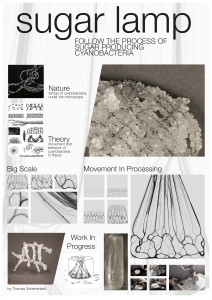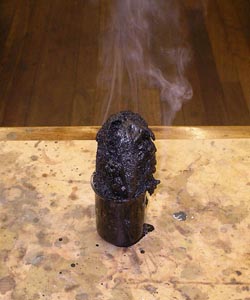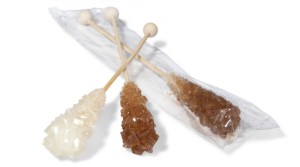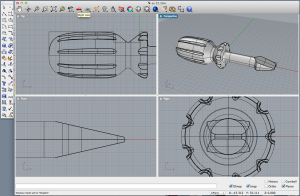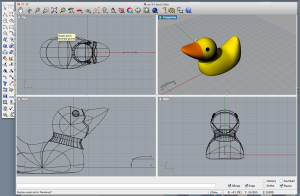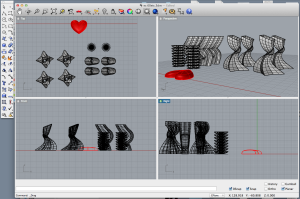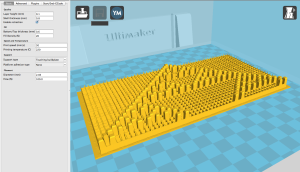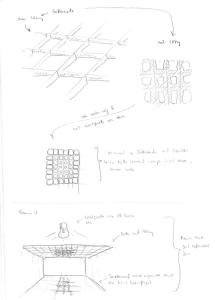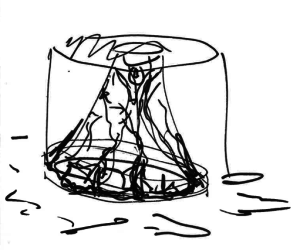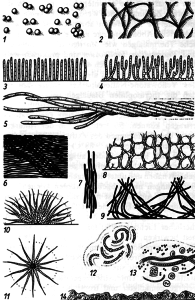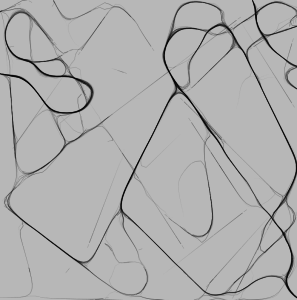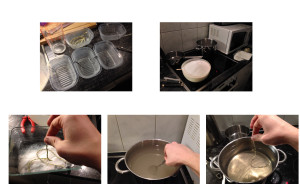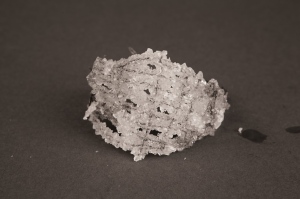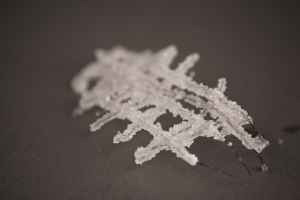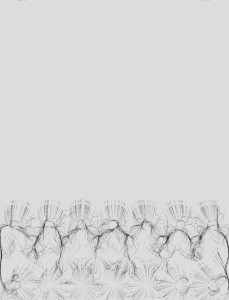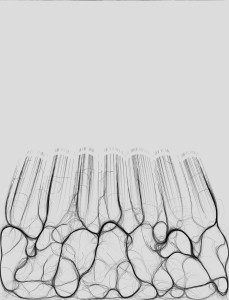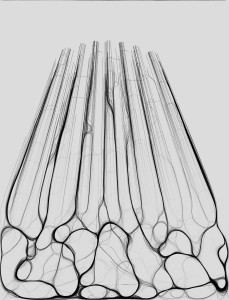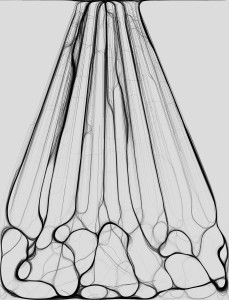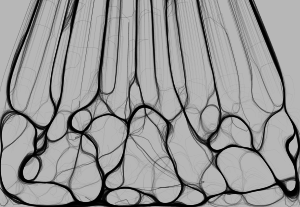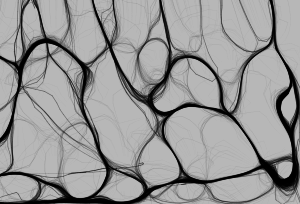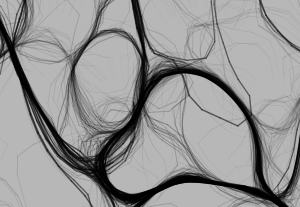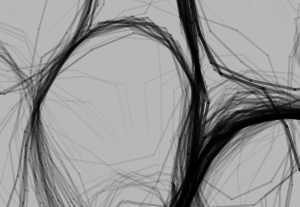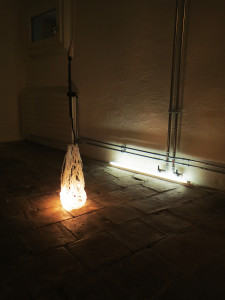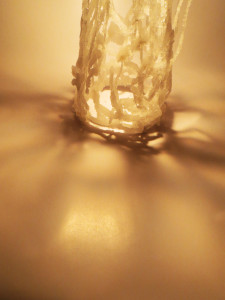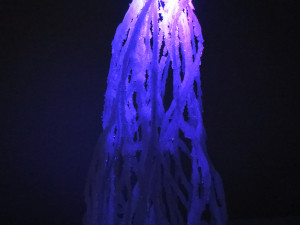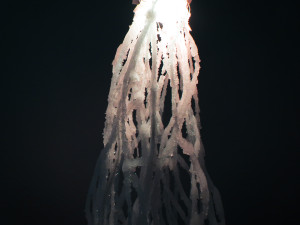19. January 2014
1. Sugar Lamp
At the beginning of the course, we had to choose two out of a few words, a material and fabrication method. The words I chose were "burning (heating)" and "sugar". There are different ways we can treat the material Sugar:
We can dehydrate sugar so that only carbon is left.
Cotton Candy is an interesting form of processed, heated sugar.
If you want to make candied sugar, sugar has to be heated.
2. Computational designs
At first we made the screwdriver and the duckling together in class. After that we played around with shapes.
First, I was interested in Cellular Automata and printed a simple version of these automata with the 3D printer.
3. First Ideas and Main Concept
During my research I came across the cyanobacteria. Cyanobacteria are bacteria that produce sugar by photosynthesis. This procedure could take over a large part of the sugar production in the future. On average, they produce ten times as much sugar as sugar beets.
Cyanobateria under the microscope.
Today, the sugar producing bacteria are already used to produce biofuels.
First ideas:
Set light sources in the room could be used to ensure that the bacteria will grow wherever the light source is. The surface crystallizes there.
Natural light may be used to change a room/space through the culturing of the bacteria. Through the normal course of the sun, bacteria will grow into a desired shape. With the use of a grid there could be interesting light and shadow.
Objects such as trees can be sprayed at night, and then crystallize throughout the day. Summer would have a wintry mood.
Main idea:
I have decided to study the social behavior of cyanobacteria. The movement patterns of social interactions of the bacteria I wanted to use as a basic design for a lamp, which represents the entire production process including photosynthesis in a visual way and within itself.
At the beginning the bacteria move in the water slightly above the ground and randomly in all directions. After that the form strains knots witch are characteristic for this kind of bacteria, while they move more and more towards the water surface, which means towards the sun. During this process the bacteria continuously secrete sugar witch they leave behind as a trace. These movements of the bacteria I wanted to simulate with processing. For that I first engaged myself with Cellular Automata . After some time i realized that this approach wasn't the right one for this project so I begun to familiarize myself with swarm behavior. And after some time found a code with which I could do something. First I wanted to build the framework of the lamp due to the movements of the bacteria. In a second step I wanted to breed sugar on this frame. Because I wanted that the original material interacts with the interpretation of the material and it would have been too complex to grow the bacteria in reality, I 've decided to visualize the sugar trail with a different technique : In the way how to make candied sugar. With a highly concentrated sugar solution, in witch sugar crystals grow on surfaces.
About cyanobacteria: http://www.institut-halbach.de/2010/02/blaualgen-ein-ueberblick-prof-dr-casper/
Beginning with Processing:
The individuals of the swarm are randomly distributed on the screen and move in a random direction.
If an individual meets the track of another, it follows that track.
Over time, the tracks begin to dissolve and in the end the individuals pursue only a single track.
4. Modelling and Fabrication Process
To test whether the crystallization of the sugar works, I've carried out a test crystallization in the first week on models made of wires.
First, the sugar had to be dissolved in water. For that, the water had to be heated. For each cup of water, I had to fill in two cups of sugar. For the whole project I've used over 12 kg of sugar. Once the sugar had dissolved, the syrup had to cool down. The wires had to be vaccinated with normal sugar crystals and only then they were ready be added into the solution. All I then could to do was wait until the crystals formed on the surfaces in the vessels. I've arranged the wire at different distances to test how this affects the growth of the crystals.
After a few days the wires looked like this:
Under the microscope, the whole thing looks like this:
In Processing, I tried to implement the social interactions of the bacteria according to the criteria above. First, the prokaryotes move slightly above the ground in the water, they move randomly in all directions. They tie in a specific way. Then they slowly make their way towards the water surface in the direction of the sun and form a thin layer directly on the water surface.
The whole process can be seen in a video on Vimeo. Because the program needed a lot of computing power, I had to speed up video about 32 times the normal speed.
If we zoom in quite close into the screen, we can see that the cells actually move in a row an make knots like the often do in nature.
The movements of cyanobacteria, which I have generated in processing, I afterwards held in place with wire and needles. After this step, the wire frame was made according to the manual. First it was vaccinated with sugar crystals and then, a few hours later it was put in large glass vessel filled with sirup, so that the crystals could grow.
I made a time-lapse movie of the growth of crystals on the frame of the lamp (the sugar trail that the bacteria left as a secretion).
5. Final Outcome
The final outcome is a lamp which reflects the whole process of sugar production of cyanobacteria. In my experiments with wire I made the discovery that de crystals
can look a little bit girly. The second time time I grew the crystals, the time I actually grew them on the prepared lamp frame, I always had a light source held on the
vessel filled with sirup because I wanted to make my time-lapse movie. This had the effect that the crystals grew more organic and much more like I hoped that it would
look in the end. Now it looks much more like an actual sugar trail than jewelry. My theory is that the slight change of growth has to do with the interaction of the small
sugar crystals with the warm light source, which is another metaphor of the sugar production method of the cyanobacteria trough photosynthesis.
I also made a short movie of my experiments with light.
